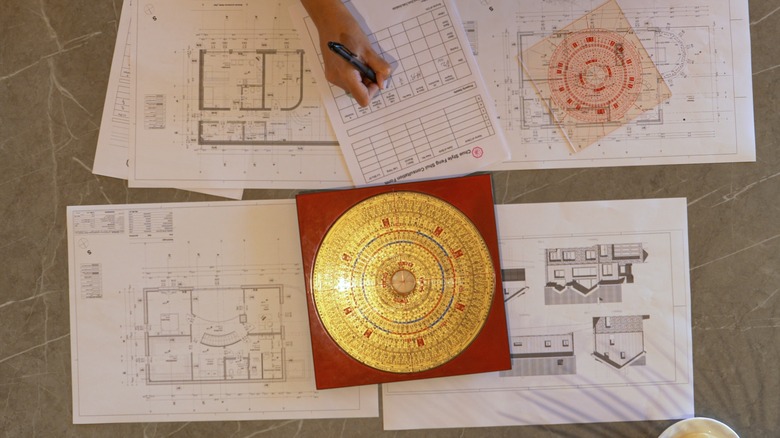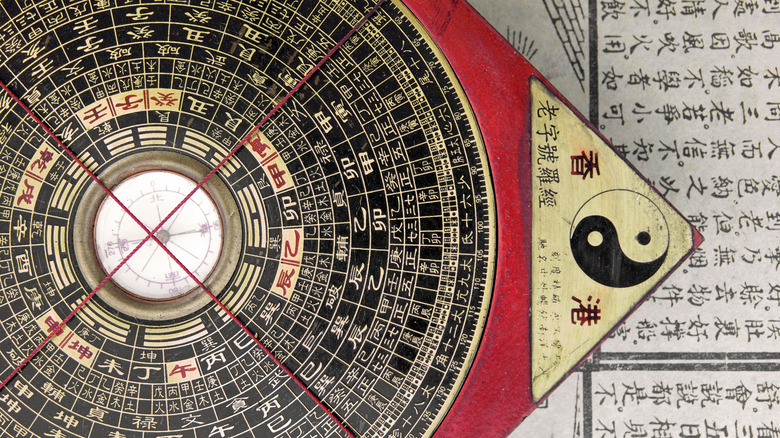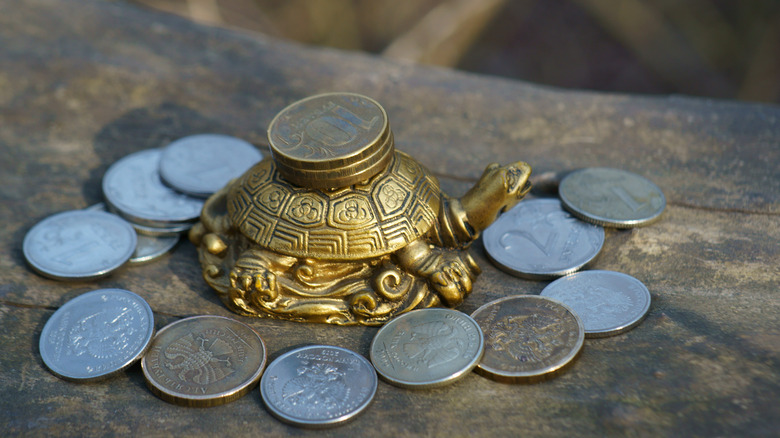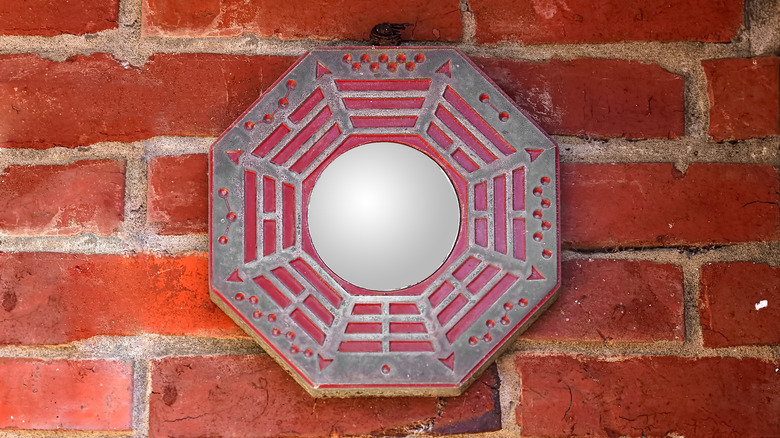Feng Shui Expert Makes Strong Case For Embracing Its Classic Roots
Feng shui might have been practiced in the east for thousands of years, but it didn't catch on in the United States until the late 20th century, along with the rise of what is now known as "Black Hat Feng Shui." The practice developed during the 1980s and is described as a combination of Tibetan Buddhism, Taoism, psychology, and Classical Feng Shui. This new school offered an all-purpose approach by using a bagua chart which asserts that all homes are divided into nine sections, each with a specific value. For instance, the upper left corner represents wealth and prosperity; the upper right, love and marriage; the middle left, health and ancestors; and the center right, children and creativity.
To apply Black Hat Feng Shui, you align the chart with the front entrance, then either add or take away elements from designated corners that need work. For instance, if you want to attract abundance, you'd add more plants to the wealth corner of your home, and if you wish to enhance your career, you'd look to add mirrors to the career section of your home — which occupies the lowest middle block of the bagua chart.
While this practice has made feng shui more accessible, it has also attracted the consternation of classical masters, who say using a generalized approach to the practice isn't likely to result in positive changes for several reasons.
What is Classical Feng Shui
Hong Kong-based feng shui business consultant, Susanne Schutz of Suzhong Consulting, explains why these one-size-fits-all solutions are ineffective in an exclusive interview with House Digest. "Classical Feng Shui is an ancient science that studies how Qi (cosmic energies) can be harnessed to benefit our internal and external environments," says Schutz, who has been involved in the practice of feng shui for more than a decade. "The goal of Classical Feng Shui is to identify sources of positive Qi within an environment and position a property and ourselves to receive this Qi."
Unfortunately, there is little understanding of Classical Feng Shui because texts and reference books — which date back centuries — are written in Chinese and rarely translated into English. Schutz says the lack of credible text "has made it difficult for non-Chinese speakers to gain access or even just a basic understanding of what feng shui is actually all about."
To further complicate matters, many of the texts that are available aren't able to capture the real essence of the traditional practice because they come from writings that have been heavily edited. As a result, Schutz says, "as with every metaphysical science, a lot of fluff has been added over the years — and this is even more true so for feng shui."
How Classical Feng Shui works
All sessions begin with a feng shui audit, where a master checks out a property's surroundings and interior to establish its positive and negative attributes; this happens with every property examined. "The goal [of an audit] ... is to make optimal use of the good areas and reduce the time spent in the more negative areas. At the same time, we aim to ensure that Qi flows freely, unencumbered, and does not become stagnant. Naturally, this analysis will provide different results for each property — even for different flats within a condominium building or high-rise," Schutz says.
From there, a practitioner will look at the property owner's bazi chart, which touches on Chinese astrology. The chart features your precise date of birth — from your year of birth to the hour you were born, allowing a master to determine what forces might play a part in everything from your personal to professional life. At its most basic, a bazi chart might indicate whether someone might be going through a productive or negative phase, and there is a reason for this. By looking at the bazi chart, Schutz says a good feng shui master can "bring the property's energies in alignment with a person's overall life potential. Each person has different life goals in different stages of their lives and in different areas of their lives."
Why Feng Shui can't be a general purpose solution
Schutz contrasts the traditional route with feng shui as it exists in the west, which she refers to as New Age Feng Shui. "New Age Feng Shui will only look at the interior of a home or office, identify the so-called 'Wealth Corner' or 'Romance Corner' based on a one-size-fits-all approach, then put an object or a particular-colored item in this sector, and the job is done. Or so the theory goes," she says.
Unfortunately, this quick-fix approach to feng shui doesn't get to the root of a specific problem. "For example — in New Age Feng Shui, once the so-called "Wealth Corner" is identified, it is [then] activated with a statue, color, trinket, etc.," she says. But when Classical Feng Shui is used, a master tries to understand what the problem is — because there could be many reasons why what Schutz calls the "wealth luck" needs to be changed. For example, the client might be spending too much, or plenty of money might have been lost for one reason or another.
Schutz argues that if a client needs money because expenditures are high, "simply activating financial energies will only lead to more spending because suddenly more money is available. This does not solve the problem," she says, adding that there is a need to work out which energies are triggering the outflow of cash, and then work with Qi to ensure it doesn't happen any further.
Practicing Feng Shui isn't about using colors or trinkets
Simply adding trinkets such as wind chimes, plants, and mirrors doesn't generate positive Qi, as Schutz tells us that a large percentage of feng shui is dictated by what happens in the natural environment outside your home. "What's important is what we see from the main door looking out, and looking in — are there any obstructions (pylons, dead trees, lamp posts, etc.) that could divert Qi from entering our house? Furthermore, is the main door in alignment with positive external and internal features," she asks. "And that's just for starters."
"Classical Feng Shui is not equivalent to Chinese culture ... [it] has nothing to do with interior design and the artful placement of symbols, pictures, statues, and all that is being used by New Age practitioners," Schutz says. This makes it unnecessary to make use of items that look Chinese to try and attract good Qi.
"In Classical Feng Shui, each client requires a completely new approach, and, thankfully, we can utilize a myriad of different Feng Shui formulas that help us find the best possible outcome for the client," Schutz says.




